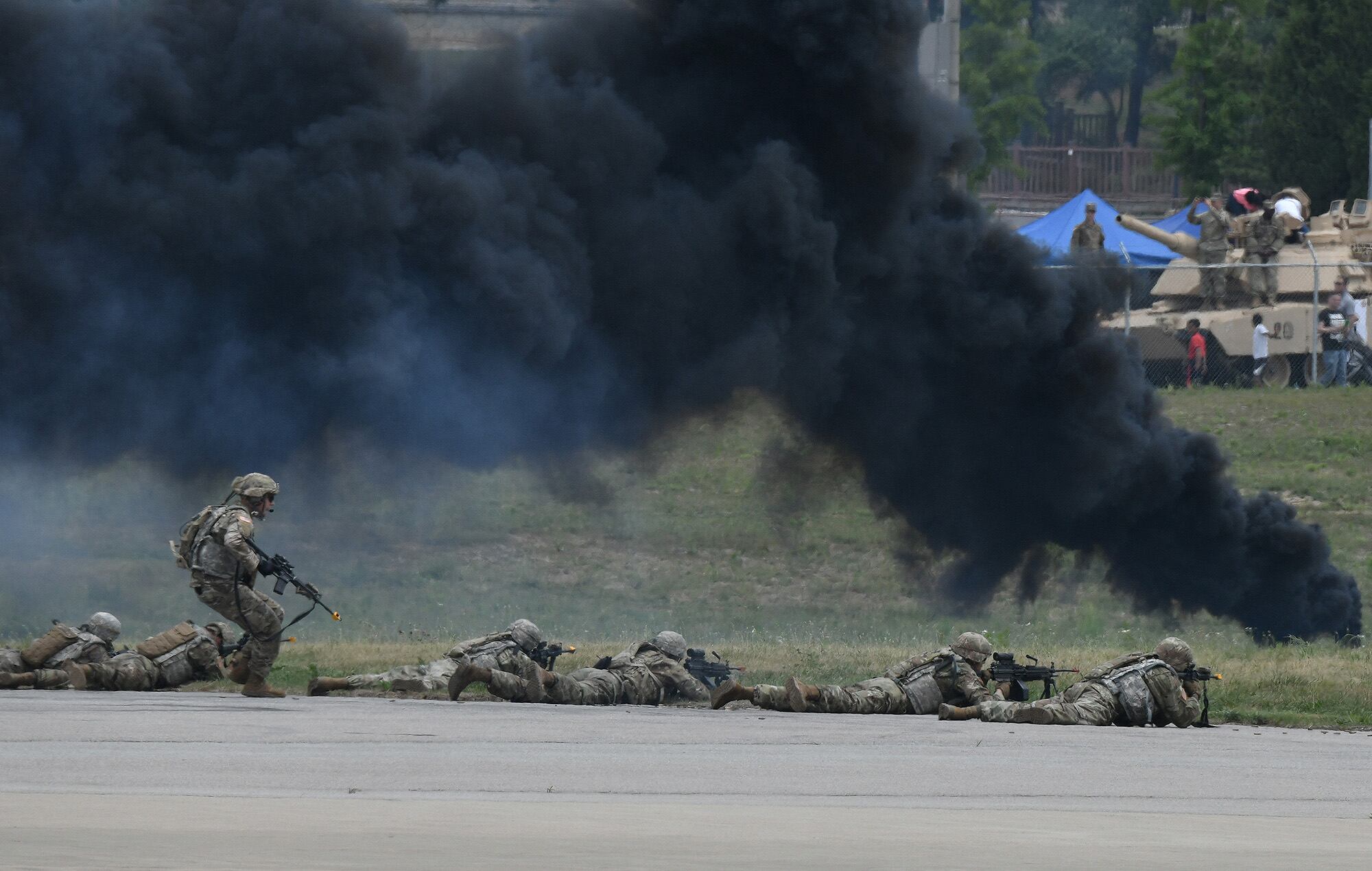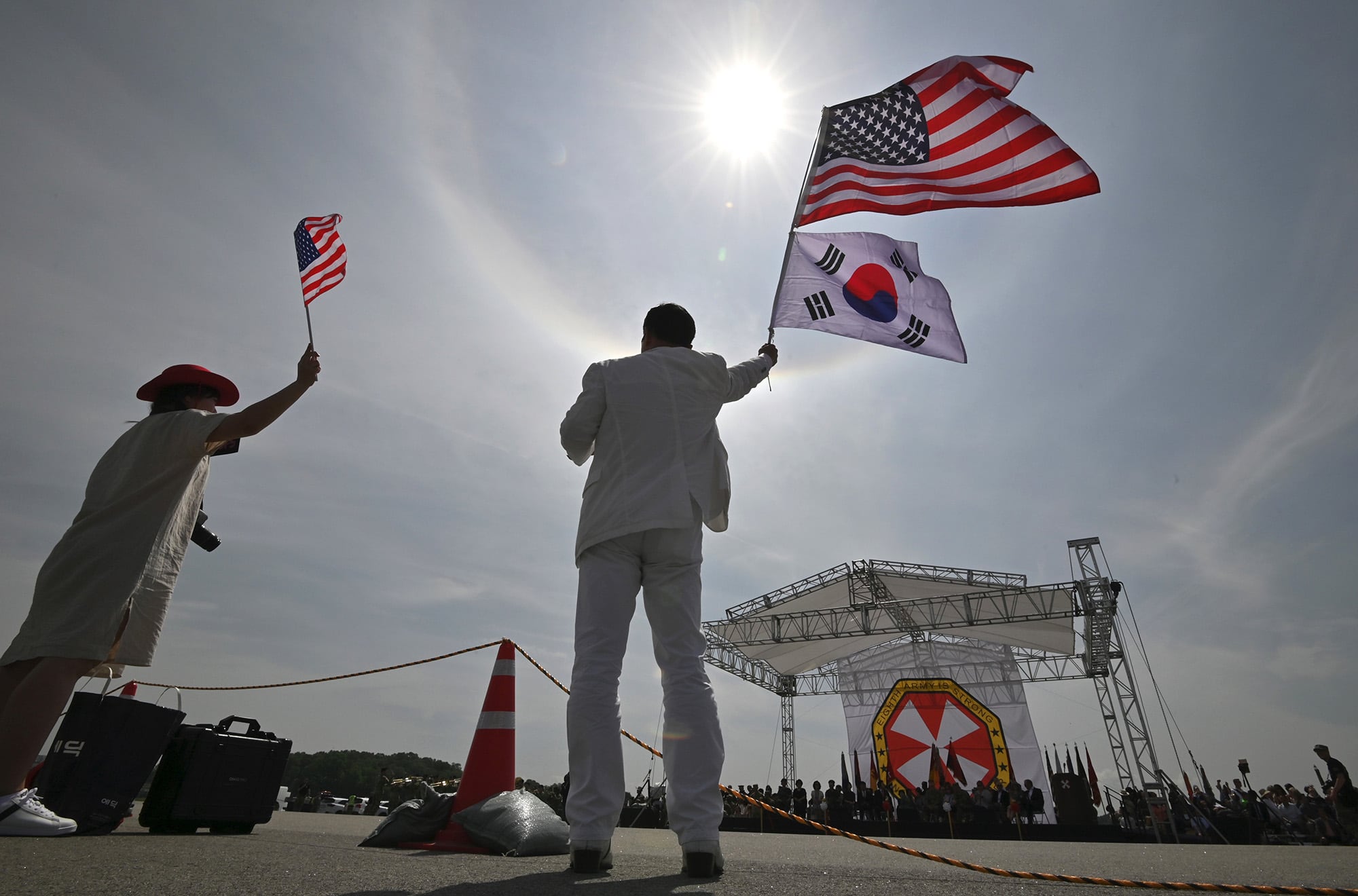The Trump administration announced it is considering withdrawing troops from South Korea because of Seoul’s failure to meet U.S. funding demands in the Special Measures Agreement/burden sharing negotiations. The secretary of defense is being put in a tough spot because per the 2020 National Defense Authorization Act he must certify prior to any withdrawal that the reduction will not significantly undermine the security of U.S. allies. In addition, the NDAA states proper consultation with allies (South Korea and Japan) must be conducted.
Although the size of the withdrawal is not specified, the Pentagon should consider the worst case of the total number because President Trump has expressed his desire to remove all troops over the years. He floated the idea of withdrawal from Korea and Japan during his campaign if the allies did not increase their funding levels for the U.S. military. He made the statement that he wanted to bring home U.S. troops “at some point” at his post summit press conference in Singapore in 2018. In 2019, he demanded some 400 percent increase in burden sharing from South Korea and the negotiations remain stalemated in the summer of 2020. The surprise announcement of the possible withdrawal of 9,500 U.S. troops from Germany has recently again put removal of troops from Korea in the spotlight, though it will be more difficult for the president to unilaterally decide to withdraw troops due to congressional action.
The secretary is faced with two challenges if he wants to construct a rationale for withdrawal for any number of troops up to the 28,500 currently stationed there. First, he must describe the threat from North Korea in a way that minimizes it and shows that the withdrawal of U.S. troops will not impact deterrence of a North Korean attack or the defense of South Korea. The secretary is also going to assess the impact on the U.S. Japan alliance. Complicating the strategic calculus is China. A significant reduction in U.S. troops in the region may be interpreted as a loss of U.S. strategic resolve and will likely invite further Chinese activity such as what occurred when Chinese and Russian aircraft penetrated the Korean Air Defense Identification Zone in the vicinity of the Korea-Japanese disputed islands of DokDo. This will complicate U.S. efforts in the South China Sea and elsewhere to maintain a free and open INDOPACIFC.
Second, he must plan for the return and stationing of U.S. troops in the continental U.S., Hawaii, Guam, or Alaska. This entails three major considerations. First is the level of effort, time, and expense required to move 28,500 troops, their dependents, and their equipment off the peninsula. A second issue centers on the decision whether to retain the force structure from Korea or deactivate all units and distribute their personnel and equipment within existing units in the United States. A final consideration is that if the force structure is retained, the military will have to construct most of the facilities to station these organizations within the U.S., all of which will be funded by U.S. taxpayers.
Additional strategic issue is what North Korea would do (e.g., When would they attack?). Pyongyang is unlikely to attack during this drawdown because that would “trip the wire,” as U.S. forces would be affected. The United States could probably deter an attack over the two to five years it would likely take to withdraw all forces, because the smartest thing for Kim to do would be to wait until the withdrawal is completed. It may seem counterintuitive, but if Kim thought there was a withdrawal date for U.S. troops, he would “self deter” and not attack until the withdrawal was complete.
Instead of withdrawing troops, the administration and South Korea should suspend current negotiations and agree to sustain the current level of funding for the next two years. During that period, negotiators should update the Status of Forces Agreement to adjust the desired cost categories, agree to the funding level for incremental costs, and determine the proper funding period which up until 2019 had been five years.
The threat
North Korea is an existential threat to South Korea. It has a 1.2 million man active-duty military, making it the fourth largest in the world. Although equipped with outdated Russian-based equipment and employing modified Russian and communist military doctrine, its numerical advantage is formidable with some 70 percent of forces offensively postured between the Demilitarized Zone (DMZ) and Pyongyang. The artillery that is positioned just north of the DMZ can range most of the 25 million South Koreans in the greater Seoul metropolitan area. This threat is commonly described as the “tyranny of proximity,” which reduces the freedom of action of the ROK/U.S. alliance due to the possibility of a massive artillery strike on the South Korean capital.
To overcome the weaknesses posed by obsolete equipment as well as severe logistics shortfalls caused by poor economic conditions and international sanctions, the regime has developed a wide range of asymmetric capabilities. These include not only its nuclear and missile programs, but also chemical and biological weapons, advanced cyber operations, and one of the world’s largest special operations forces. In addition to its long-range missiles it has been developing new missile, cruise missile, and rocket systems that can reach the so-called “fat targets” of Camp Humphreys (which hosts the majority of U.S. ground forces), Osan Air Base (the center of combined ROK and U.S. air power), and Cheongju Air base (the ROK F-35 base). Pyongyang’s missile and rocket arsenal provides the North with attack options at the initiation of hostilities that could destroy U.S. ground forces and attrit a key allied capability: air power.

Despite its inferior capabilities in conventional forces and logistics, the North’s military mass and asymmetric strengths make it capable of causing death and destruction in the South on a scale unseen since the Korean War.
The North has developed its military capabilities to support its seven-decades-old strategy of subversion, coercion/extortion, and use of force to achieve unification under the domination of the Guerrilla Dynasty and gulag state to ensure survival of the Kim family regime. In short, the regime wants to unify the Korean Peninsula on its terms and eliminate the Republic of Korea.
While war is the most dangerous threat to the alliance and the region, there are other threats for which the ROK/U.S. alliance prepares. The most significant is the potential for instability and regime collapse in the north. A collapse could lead to a range of contingencies that includes responding to a humanitarian disaster, recovery and security of the full range of Pyongyang’s weapons of mass destruction, dealing with large-scale refugee flows, resistance and a likely insurgency opposing occupying forces, and internal conflict and civil war. Since the conditions leading to regime collapse may also cause Kim Jong-Un to order the execution of his campaign plan to unify the peninsula by force to try to ensure his survival, the alliance may face a compound threat comprising two or more of the contingencies listed above. Instability and collapse will not be a benign event.
For 67 years, the U.S. and South Korea have deterred North Korea from attacking the South and resuming hostilities to achieve its objective of unification. In 1997, the highest ranking defector from North Korea, Hwang Jang-yop was asked why the north has not attacked despite its strategy and enormous investment in its military capabilities. He simply answered, the presence of U.S. forces is the only thing deterring war on the Korean Peninsula.
Complex problems of withdrawal
A decision to withdraw any number of troops below the floor of 28,500 will require significant support from Congress in the form of authorization and appropriation. The question for the Pentagon, INDOPACOM, and USFK is whether they have completed contingency plans to withdraw troops.
A U.S. troop withdrawal from the peninsula would take time and impose significant costs, running into the hundreds of millions if not billions of dollars. Transportation and logistics demands would be immense. Again, this would not be as simple as providing commercial airline tickets and sending people to Incheon Airport. The United States would likely spend months moving equipment within Korea to Pier 8 in the Port of Busan for shipping back to the States. The travel costs for moving all personnel and dependents would be sizable, even if a combination of military transport (which would not be enough), commercial air, and contracted charter were used. Then, there are base-mitigation costs for the environmental impact of 70 years of base operations. That is why there has not been an expeditious turnover of bases that have already been programmed for return.
Once the troops and their equipment return home, DoD will have to face the second question: Where will they go? This, too, is a complex issue. It will be further complicated by potential troop withdrawals from other locations such as Germany and Japan. The U.S. military has optimized the base structure in the continental United States (CONUS) over the past couple of decades through a process known as BRAC (base realignment and closure). If there is no place to put these 28,500 U.S. troops currently stationed in South Korea, the military may have to inactivate the force structure that exists in Korea. This will reduce overall U.S military capabilities.
On the other hand, if there is a decision to retain the Korean force structure, there would need to be a rather large appropriation for military construction on bases throughout the United States. Facilities would have to be built to station these units (all facilities, from HQ and maintenance buildings to barracks). In addition to the effect on deterrence and the security of South Korea, the administration and Congress must assess if the cost of withdrawal provides any substantial benefit to military force posture and the United States.
Finally, it is the shared interests and shared values that underpin our linchpin alliance in northeast Asia. Removing U.S. troops will undermine U.S. national security interests. We should recall the words of the recently passed Gen. Paik Sun-yup, a national hero of Korea and the ROK/U.S. alliance who fight side by side MacArthur and Ridgway and convinced President Eisenhower to rebuild the ROK Army during the war. In a 2006 interview General Paik insisted that “crisis-driven political-military decisions here will ultimately determine the balance of power throughout Asia, the most important region for the world’s economy. This peninsula is the pivot.”
David Maxwell, a 30-year veteran of the United States Army and retired Special Forces colonel, is a senior fellow at the Foundation for Defense of Democracies (FDD), where he also contributes to FDD’s Center on Military and Political Power (CMPP). For more analysis from David and CMPP, please subscribe here. Follow David on Twitter @davidmaxwell161. Follow FDD on Twitter @FDD and @FDD_CMPP. FDD is a Washington-based, nonpartisan research institute focusing on national security and foreign policy.
Editor’s note: This is an Op-Ed and as such, the opinions expressed are those of the author. If you would like to respond, or have an editorial of your own you would like to submit, please contact Military Times managing editor Howard Altman, haltman@militarytimes.com.




